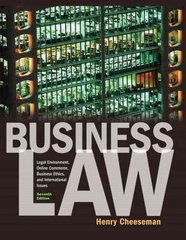Chapter 10: Perfect Competition 1. What is the equilibrium price and quantity in the rafting industry? Price: Purpose In this chapter, we learned the characteristics of perfect competition and the advantages of productive and allocation efficiencies that occur in the long run in a perfectly competitive industry. We Quantity: also determined how perfectly competitive firms make short-run decisions that will maximize profits, minimize losses, or close the business down. The purpose of this exercise is first, to determine if businesses that you encounter on a daily basis are perfectly competitive. Second, to understand how Each of the 100 firms in the industry has fixed costs of $100 a day for equipment, including rafts, perfectly competitive business and industries make short-run and long-run decisions. helmets, and life jackets. Their variable costs are for the wages of a guide that is needed in each raft and snacks for the rafters. Assume that the following table represents each firm's costs. Directions This exercise has two parts. In the first part, you will examine products that you buy often Output Variable Cost Total Cost Average Average Total Marginal Cost and determine if they come from a perfectly competitive industry. In the second part, you will make (Trips/Day) Variable Cost Cost SO $100 short-run and long-run production decisions for a perfectly competitive business. 200 300 $200 $300 $200 360 460 180 230 160 500 600 167 200 140 Part 1. Identifying Perfect Competition 1 750 850 188 213 250 List ten goods or services that you buy frequently. Are these products from a perfectly competitive 1050 1150 210 230 300 industry? Based on the characteristics of perfect competition, why or why not? 1400 1500 233 250 350 Products you Purchase Competitive Industry Why? 1 McD No Some control over 2. Given the market price determined at equilibrium in the industry, explain why each firm in the Price industry will take four trips per day at a price of $250. How much will each firm profit or lose at this IG U A W N output? LD CO 10 3. What is the long-run equilibrium price for this industry? Part 2. Short-Run and Long-Run Production Decisions Suppose that the following table represents the industry demand and supply for all-day rafting trips down a river in a large state park. Assume that there are 100 firms in this perfectly competitive industry, 4. Explain the process through which the industry and each firm in the industry will reach the long-run each with identical costs. equilibrium price. Price Quantity Demanded Quantity Supplied Quantity Supplied Beginning Ending $350 200 600 $300 300 500 5. Estimate a reasonable short-run supply curve for the industry to complete the last column of the $250 400 400 previous industry demand and supply table. $200 500 300







